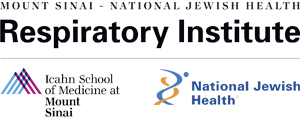Diagnosing Sarcoidosis
The process of diagnosing sarcoidosis involves a medical history, physical exam and multiple tests. Because the disease’s cause is uncertain, these tests are intended to eliminate the possibility that symptoms are the result of another condition.
In most patients, a definitive diagnosis of sarcoidosis requires a biopsy (such as of the skin, lymph node, or lung) to determine whether granulomas, tiny collections of immune cells, are present. The Kveim-Siltzbach skin test can also be used to diagnose sarcoidosis. Mount Sinai is the only place in the United States offering the Kveim-Siltzbach test, which is diagnostic in up to 80 percent of our patients and eliminates the need for more invasive, uncomfortable, and expensive procedures.
Once the diagnosis of sarcoidosis is confirmed, additional tests are used to determine the extent of the illness, the need for treatment, and that treatment’s anticipated results. Because the lungs are most often involved, sequential test results evaluate the patient’s breathing.
Tests typically include:
- Chest CT scan and chest X-ray (which show how the lungs look)
- Pulmonary function testing (which shows how the lungs work)
- Additional blood tests to determine if organs other than the lungs are affected by sarcoidosis and whether these organs are functioning properly
- Urinalysis and blood tests to measure calcium levels because elevated calcium may cause kidney difficulties
- Other tests such as echocardiograms, Holter monitoring, CT scans , PET scans, and MRI scans may be ordered as necessary
Depending on each patient’s test results, our sarcoidosis physicians will recommend one of a number of treatment options
